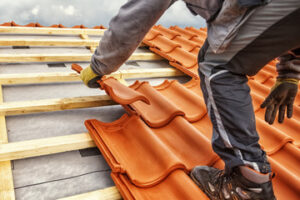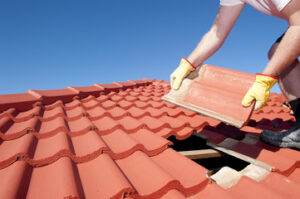Concrete is a workhorse material that can make a bold, industrial statement in a hospital lobby or automotive showroom. It also eliminates dust in warehouse environments and is easy to clean and maintain.

There are several variables to the polishing process that can affect sheen specifications and duration. These variables include equipment, abrasive material, chemical densifiers, and the sheen level of the finish. For professional help, contact Concrete Polishing Contractor Huntsville TX.
Surface preparation is the first step in any concrete coating project. It includes cleaning the concrete, removing existing coatings, and repairing cracks. It also includes evaluating the concrete substrate and determining how rough or smooth the finished surface should be. This process is essential because the concrete coating system can be unforgiving of any errors in surface prep. For example, if the concrete is too smooth or too rough for the coating to adhere properly, it will not bond and could eventually fail.
There are many different methods of surface preparation, and it takes a skilled professional to be able to read the specifications and determine which method is appropriate. The most common is abrasive blasting, but there are also chemical treatments available to remove some contaminants. In addition, mechanical profiling can be used to roughen the concrete and create a profile that is more suitable for the desired application.
The SSPC (Society for Protective Coatings) has developed a set of standards that codify how the substrate should be prepared to achieve certain results. These standardized results help owners to assure they are getting consistent results from contractor to contractor, as well as to ensure the final product meets the job specification. The SSPC standards are not ordered by cleanliness level, however, as one might expect; they are actually ordered by the anchor pattern to be achieved on the workpiece.
A good surface preparation company will be able to use these standards to guide the process, and they will have experience preparing substrates for all kinds of coatings and repairs. They will know what type of abrasive to use for blast cleaning, and they will understand how to repair the substrate after the abrasive has removed all of the loose material.
Once the concrete has been cleaned, it can be primed and then coated, provided that it is dry. It is important that the contractor check the moisture content of the concrete with a device such as a Protimeter to see if it is ready for the next step. If the concrete is still wet, it is better to wait until the coating is ready, as moisture can cause air bubbles in the cured coating that will weaken its bond and lead to failure.
Scope of Work
Concrete polishing contractors perform a variety of services for the commercial flooring industry. From refinishing existing floors to revitalizing worn down industrial and retail warehouse floors, this process can make your facility look almost new again. While the specialized skills needed for this type of work may not be available in high schools or community colleges, entry-level workers typically learn through on-the-job training.
It is important for a concrete polishing contractor to have a clear scope of work document from the beginning. This will help to minimize misunderstandings and ensure that all parties are on the same page regarding what is going to be done, how long it is going to take, and the cost involved.
The document should also include the expectations of all parties. This includes the customer, the project manager, and the concrete polishing contractor. This will help avoid misunderstandings and potential disputes down the road.
A good concrete polishing contractor should also provide an estimate before starting the job. This will allow the customer to understand the scope of work, which will help them budget for the entire project. This is especially important for large projects with multiple trades. It is important for the Project Manager to keep the General Contractor apprised of production numbers and duration timings during the polishing process, as well as any delays or other challenges.
Before the crew begins their work, the site should be cleared of all structures that aren’t going to be used in the future. This will reduce the amount of time the crew needs to spend cleaning the floor and will also ensure that everything is properly cleaned once the crew is finished.
After the concrete polishing process is complete, the crew should leave written instructions on how to maintain the floors and when they will be ready for use again. It is also a good idea to have a supervisor on site during the entire process to address any issues quickly.
The qualifications that a concrete polishing contractor needs to have for the job include the ability to read and write, a valid driver’s license, and knowledge of concrete polishing and coating materials. In addition, it is important to have a strong work ethic and the physical ability to perform manual labor.
Equipment
A quality concrete polishing contractor will have a variety of tools and equipment to perform their work. This includes the necessary diamond tooling for various types of projects, as well as a vacuum system to remove dust from the workspace. The size of the space will determine which equipment is best suited for the job, as will the desired level of shine. For example, a roughing diamond will not be appropriate for high-gloss floors.
The specialized equipment required to perform concrete polishing is expensive. The concrete polishing process itself takes a long time, as it finely grinds the surface of the concrete and uses something similar to sandpaper to produce a smooth surface that can range from a dull luster to a high-gloss finish. The grinding process also compresses the concrete molecules, resulting in a harder and denser state.
Having the right tools and equipment will save time and ensure that the project is done correctly and to your satisfaction. For example, a high-quality grinder will help to reduce vibrations, which can cause damage to the concrete and the machines used in the process. In addition, a vacuum system will capture the dust generated during the grinding and polishing processes, preventing it from becoming airborne and contaminating products in your warehouse.
In addition to the benefits of a smooth and glossy floor, polished concrete can be stained in a wide array of colors. This is particularly popular in industrial environments where the floor can be customized to match a specific company color scheme. Staining can also be used to create patterns in the concrete, such as a herringbone pattern or a galaxy pattern.
The qualifications for a career as a concrete polisher include a degree in concrete or construction technology, experience with concrete coatings and finishes, and the physical ability to do manual labor. Entry-level concrete polishers learn their skills through on-the-job training and apprenticeships with contractors or trade unions. Having a valid driver’s license is also important, as you will likely need to travel to different job sites. Bedrock Contractor Supplies carries all of the basic equipment, tools, and diamond tooling needed for a concrete polishing job.
Safety
Concrete polishing is a specialized technique that is gaining popularity for use in commercial and industrial facilities. It can create an attractive, clean, and durable surface that enhances the appearance of any space. However, it’s important to hire a contractor who has experience working with this material and knows how to achieve high-quality results. Inexperienced contractors can damage flooring, or fail to complete the job properly. This can result in additional costs and downtime for the facility.
During the pre-polishing phase, concrete polishing contractors should thoroughly clean the floor to remove dirt, debris, and old paint or coatings. They must also repair any cracks or holes in the concrete. This allows the concrete to be polished without causing further damage. The contractor should also address any defects that may affect the integrity of the concrete or cause safety issues in the facility.
Grinding and polishing concrete can create a lot of dust. This dust can irritate the respiratory tracts of people who work in the construction industry. Inhaling this dust can increase the risk of developing silicosis, a serious and painful disease. The contractor must ensure that they control the level of dust generated by their equipment and make sure workers are protected from exposure to it.
Cleaning a polished concrete floor is much easier than cleaning carpet or other types of flooring. Dirty floors can lead to slips and falls, so it’s important that they are regularly cleaned to reduce the risk of injury. However, keeping a floor clean requires a significant amount of time and resources. This can strain staff in large facilities, so it’s important to find a solution that will reduce maintenance costs and minimize downtime.
Concrete polishing is an ideal solution in many cases. However, there are some instances in which coverings like tile or carpet are more appropriate. A reputable concrete polishing contractor will advise when a floor would be better served by other methods. They can also provide advice on how to best maintain a concrete floor once it’s been polished. For example, a good maintenance plan includes sweeping, mopping, and using neutral pH cleaners to keep the floor looking its best.








